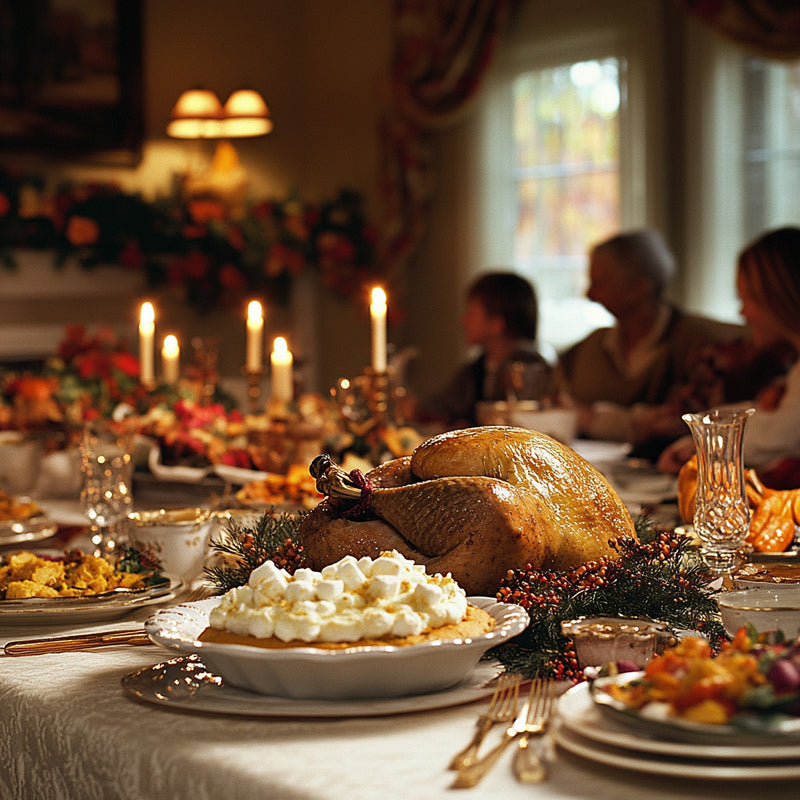
The Perfect Timing for Thanksgiving Dinner: Advice from Grandmas with Decades of Experience
Thanksgiving is about more than just pulling a golden, crispy-skinned turkey out of the oven; it's about orchestrating a meal that brings families together, balancing tradition, logistics, and love. Yet one perennial question sparks heated debates: When is the best time to serve Thanksgiving dinner?
To answer this, Kris Osborne consulted six seasoned grandmothers with a collective history of hosting hundreds of Thanksgiving dinners. These grandmothers—each with unique family dynamics, traditions, and cultural practices—unanimously agreed on a sweet spot for serving the iconic meal: between 4 p.m. and 6 p.m. Their choice stems from years of wisdom and is rooted in practicality, family dynamics, and creating an atmosphere of togetherness.
Why 4 p.m. to 6 p.m. Is "Turkey Prime Time"
Grandmas highlighted that this late-afternoon to early-evening frame gives ample time for preparation, fosters a comfortable flow for the day, and allows family members to fully engage in the celebration.
- Preparation Without Stress: Faith Kramer from Oakland, California, pointed out the importance of having enough time to "produce the meal." Starting late afternoon means there's no rushed chaos in the kitchen. For families juggling multiple meals in a day, this timing allows guests to stop by for appetizers or dessert even if they can't make it for the entire meal.
- A Balance of Meals: Serving around 4–6 p.m. balances the day’s eating schedule. According to Kramer, an earlier meal feels like an “odd mid-afternoon lunch,” but waiting too late (like 7 p.m.) can leave children and older family members cranky or too sleepy to fully enjoy dessert.
- A Nod to Tradition: Donna Weinstein from Maryland explained that her family naturally gravitates toward evening meals, making 6 p.m. the ideal time for their Thanksgiving feast. While turkey-induced sleepiness is real, this timing ensures family members don’t spend the entire afternoon napping.
- Perfect for Families with Kids: Grandmas like Linda Starr and Diane Angelucci mentioned the importance of children’s nap schedules. Angelucci advocates for flexibility, suggesting that if toddlers are part of the celebration, scheduling dinner during nap time lets adults eat in peace while kids can join the meal later.
- Enough Time for Post-Dinner Socializing: Having dinner in the early evening ensures there’s plenty of time to socialize, eat dessert, and unwind before family members head home, as highlighted by Lucy Piatek from Canada.
The Logistics Behind the Timing
Beyond the turkey and gravy, holiday hosts are balancing countless variables: travel schedules, kids’ routines, and even traditions that enhance the celebration. Here’s how the grandmas navigate these layers:
- Travel and Accommodations: If family members are coming from out of town, like in Piatek's case, the late-afternoon meal allows guests to arrive without stress and enjoy activities beforehand.
- Incorporating Fun Traditions: Several grandmas use the earlier part of the day to host games, storytelling, or even non-dinner traditions. Kramer treats Thanksgiving a bit like a Passover Seder by giving it depth with history, games, and thought-provoking discussions. Piatek organizes a chocolate egg hunt for her grandkids.
- Learning Through Experience: Timing a dinner for a multigenerational family often comes through trial and error. Piatek recalled trying a 2 p.m. meal and finding it too early to get the turkey and trimmings ready. Meanwhile, a 7 p.m. meal one year left young kids overtired and cranky.
- Meal Schedule Considerations: Cheryl Evans noted that serving dinner too early disrupts the day’s normal flow because kids may have already had lunch, making them less hungry for dinner. Alternatively, Kramer times her meal to accommodate house-hopping guests who attend multiple Thanksgiving dinners.
The Emotional Labor of Hosting
Planning a Thanksgiving dinner goes far beyond picking a time and cooking. These grandmas embody the emotional and physical labor of creating holiday magic—ensuring everyone from toddlers to grandparents leaves feeling valued and included. They consider factors like:
- Family dietary needs
- Schedules
- Home dynamics
- Emotional well-being
As Angelucci wisely points out, "You can't expect holiday dinners to be perfect. As hosts, we often stress about things we can't control instead of enjoying the time together." The grandmothers’ goal isn't perfection but creating shared memories and fostering connection.
The Bigger Picture
The 4 p.m. to 6 p.m. dinner window aligns with more than just practicality—it's a reflection of a family-oriented mindset. This timeframe ensures everyone has space to breathe, relax, and genuinely enjoy the meal. Whether you're hosting toddlers, balancing travel schedules, or planning a multi-course feast, this timing provides a unified sweet spot where the entire family can come together.
Thanksgiving is much more than a singular event. It’s a tapestry of planning, love, and the desire to create the best environment for loved ones—a task commemorated by generations of caregivers. As these wise grandmas revealed, the timing of the meal might seem like a small detail, but it’s one piece of a larger, more meaningful holiday puzzle.
Conclusion
Whether you’re an experienced host or a first-timer, adopting the late afternoon/early evening dinner strategy ensures an occasion that’s both practical and magical. Take a cue from these grandmas, and remember: Thanksgiving’s true success lies in creating moments of joy and connection for the people around your table.




